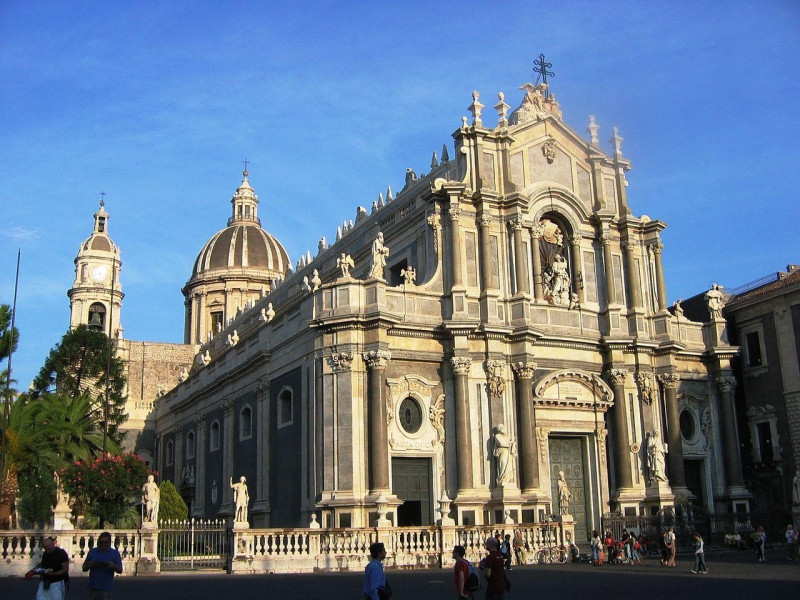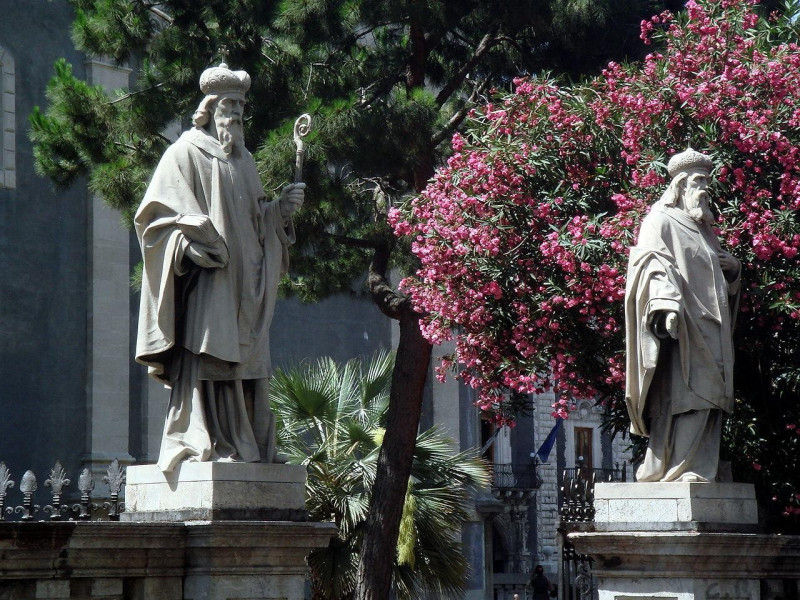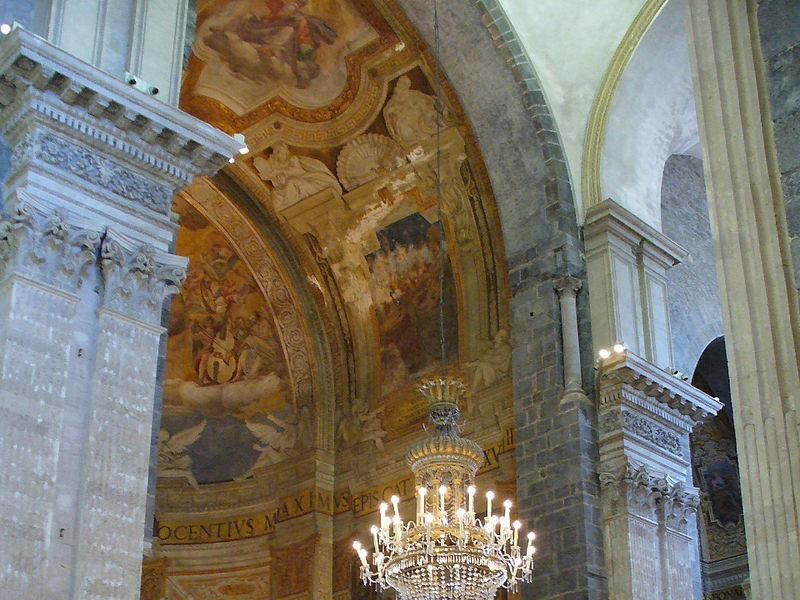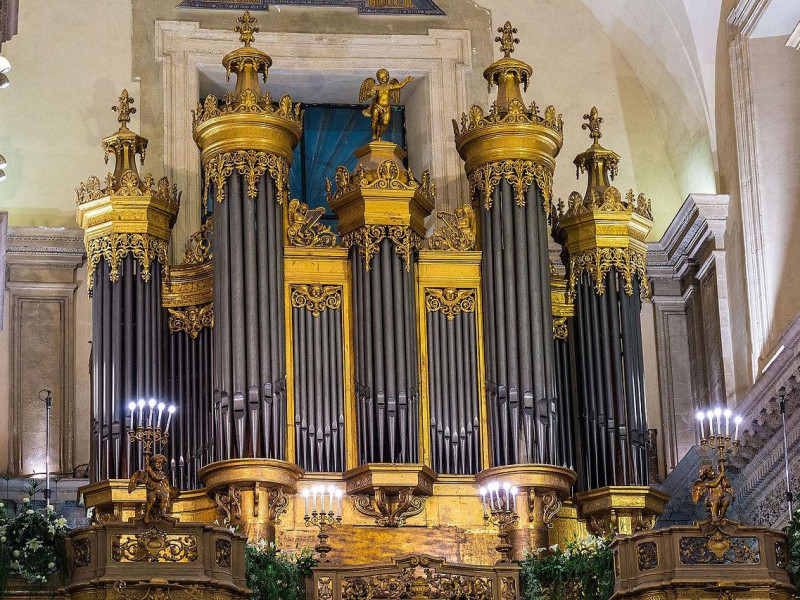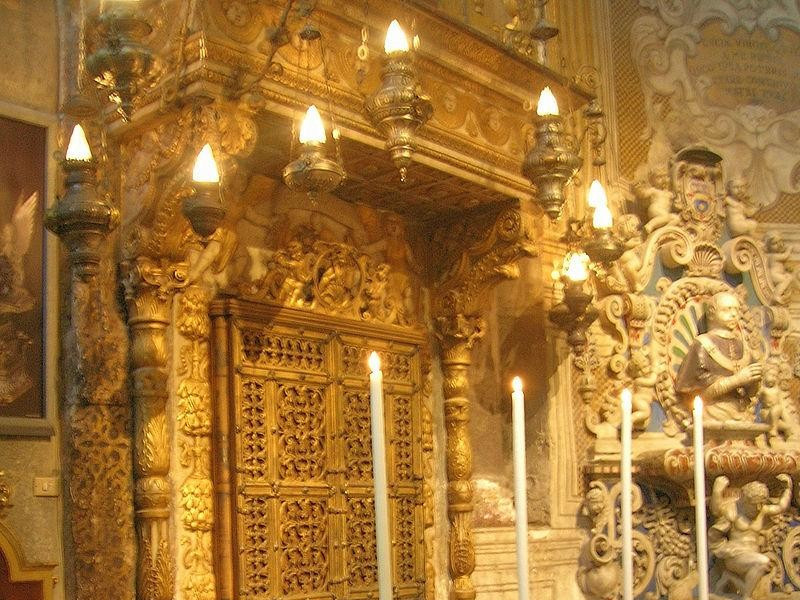Cattedrale di Sant'Agata (Duomo)
The first building dates from 1078-1094, on the ruins of the Achilliane Thermae, on the initiative of Count Roger, with the characteristics of "ecclesia munita" (fortified). Normans remains consist of the transept, two towers hubs and three semicircular apses composed of large blocks of lava rock. The present building is the work by Girolamo Palazzotto, who took charge mainly of the interior, while Giovanni Battista Vaccarini designed and followed the work of the facade. It leads to the churchyard through a marble staircase that culminates in a wrought iron gate with ten bronze Saints. The churchyard is divided from the Duomo Square by a balustrade of white stone with five large statues of Saints in Carrara marble. The prospectus is three orders composite Corinthian and Attic, in Carrara marble. All orders are adorned with statues of St. Agatha. The main door in wood consists of thirty-two finely carved panels on the sides there are the statues of Saints Peter and Paul. The dome dates back to 1802 and is equipped with columns and large windows. The bell tower was built for the first time in 1387, but its history is very uneven: it suffered several collapses and will be realized only in the nineteenth century in its present form by Carmelo Sciuto Patti. The reconstruction after the earthquake of 1693 determines the smoothness of the interior decorative styles. Among the masterpieces on display, a few have passed unscathed the disastrous earthquake and the current artistic heritage, especially the Flemish cycle, is due to interventions of patronage. The tomb of Peter Galletti, bishop maker last reconstruction, is the most sumptuous of the Church, made of richly decorated and inlaid marble. The entrance to the Chapel of the Virgin is surrounded by a marble portal of 1545 by Giovan Battista Mazzola. The altar is lit by a lancet window in lava stone set in a Norman arch which holds the sculpture of "Virgin Coronation". In 1958, in the Chapel they were placed the sarcophagi of the Kings of Aragon. The Sacristy preserves an important fresco representing the eruption of Etna in 1669, by the painter Giacinto Platania. But the Chapel dearer to Catania's is down the aisle: an elaborate wrought iron gate, by Salvatore Sciuto Patti 1926, protects the majestic St. Agatha's Chapel, also called 'a cammaredda, which are kept inside the bust treasure chest and reliquaries of the Saint. Inside, the Chapel is decorated with a cycle of frescoes by Roman painter Giovanni Battista Corradini (seventeenth century).
